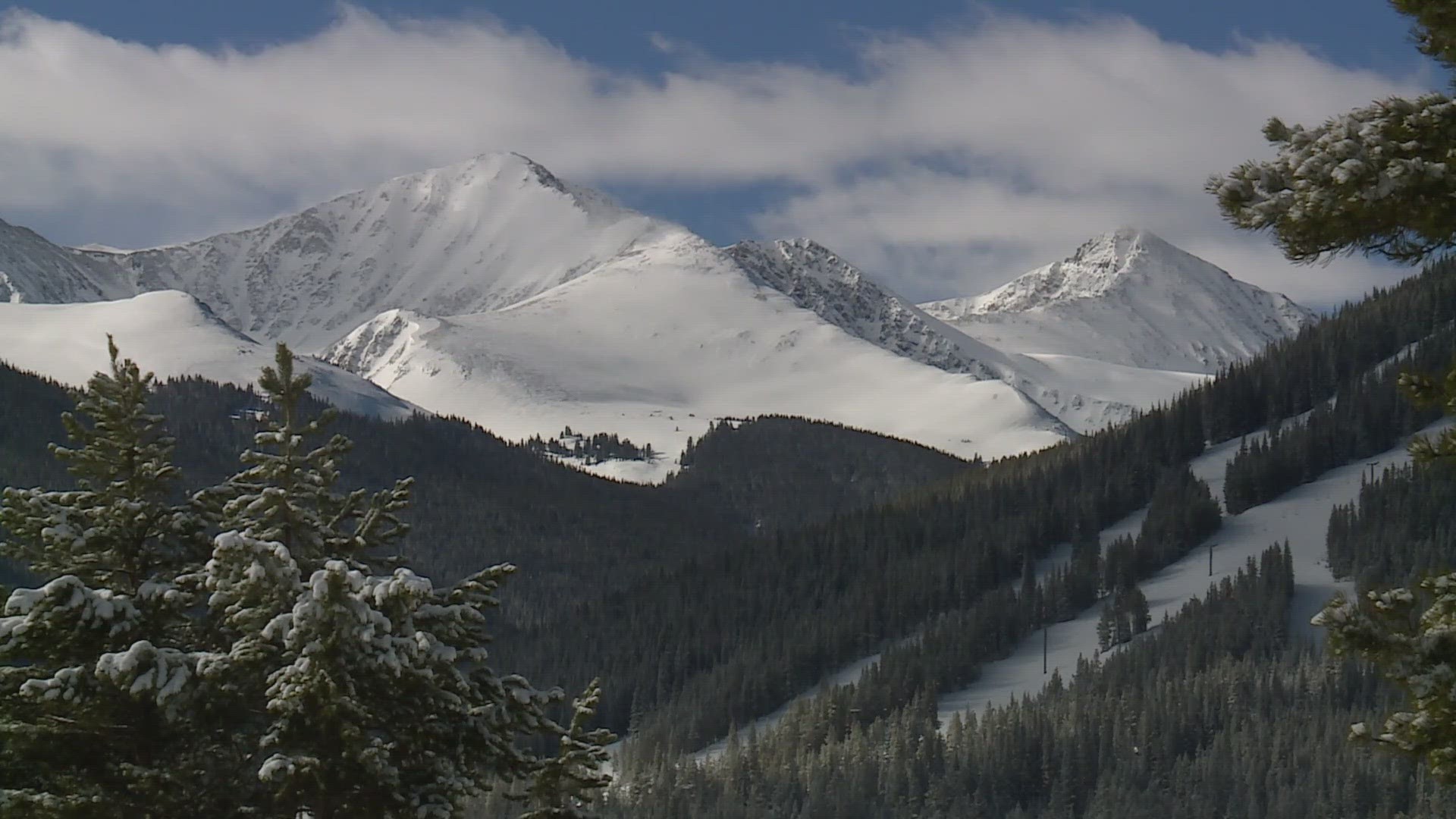DENVER — There have been a few long dry spells so far this winter, and mountain snowpack is a little on the low side. It was about 25% below the average on Dec. 20, according to a network of automated weather instruments called SNOTEL stations.
There are 115 of these instruments located near the headwaters of Colorado’s major river systems, and they feed in new data every day. The map below is divided into eight major river basins, and the percentages are relative to the daily average of snow-water equivalent in the snow.


But those SNOTEL stations only measure the snowpack between 8,500 and 11,600 feet. This means that most of the snow that we see above the tree line is not even counted.
“Half or more than half of our seasonal snowpack can be at those higher elevations, and that’s also the snowpack that melts last, generally,” said Taylor Winchell, a water manager with Denver Water.
The SNOTEL stations are run by the Natural Resources Conservation Service (NRCS) but Winchell said it would be challenging and expensive for them to place and maintain weather stations in the highest elevations.
And if we were able to measure that high elevation snow, it might not change the percentages much because it would also raise the average. Water managers generally assume that the snow is proportional with elevation, which means that, if it's 25% below average in the zone where the SNOTEL stations are located, then it's likely close to 25% below average in the higher elevations.
It's not always the case, but it usually checks out. At least for now.
In a future climate, the distribution of snowpack with elevation may be vastly different.
“There are many factors that determine how snow falls and where snow falls, and one of those factors is temperature,” said Winchell.


Scientific studies have shown that, because of climate change, snowpack could decrease at the lower elevations where our automated stations are currently located, while snowpack at the higher elevations might be less impacted and even increase.
That’s where the Airborne Snow Observatory (ASO) comes in. Instruments on a plane can scan above, below and between ground base stations, producing high-resolution data and images.
However, due to its high expense, these flights can only operate in Colorado a few times each spring – at least for now.
“We hope to see these airborne snow observatory surveys really expand into the future and help fill in those spatial gaps between SNOTEL stations," Winchell said. "We really see these two networks working in tandem.”
SUGGESTED VIDEOS: Snow in Colorado
9NEWS+
9NEWS+ has multiple live daily shows including 9NEWS Mornings, Next with Kyle Clark and 9NEWS+ Daily, an original streaming program. 9NEWS+ is where you can watch live breaking news, weather updates, and press conferences. You can also replay recent newscasts and find videos on demand of our top stories, local politics, investigations and Colorado specific features.
To download 9NEWS+ on Roku search for KUSA.
To download 9NEWS+ on Fire TV search for 9NEWS.

